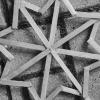-
Posts
22 -
Joined
-
Last visited
Reputation Activity
-
 direct_current reacted to toltec in Remove Glare
direct_current reacted to toltec in Remove Glare
Well, it could be done but you are really stretching the limits of any software with that image. Affinity Photo would do it as well as anything else. Which is to say with great difficulty.
A mixture of adjustments, curves, levels, exposure and so forth. There is no easy way, just trial and error.
-
 direct_current reacted to toltec in Overlay Brush in Develop Persona
direct_current reacted to toltec in Overlay Brush in Develop Persona
This one erases the overlay. Paint On / Paint Off
In the Overlays panel you can add extra Overlays. Delete etc.
Just like adding more selection areas.
I quite like them but it a matter of personal choice.
-
 direct_current reacted to GMPhotography in Milky Way Path
direct_current reacted to GMPhotography in Milky Way Path
Here is my most recent Milky Way image. I missed the alignment of the milky way with the path by about a month and a half so to make it really work, I had to flip the path horizontally. For all my milky way images, I use the in-camera astrotracking that my Pentax K3II is equipped with (that is, the sensor moves with the rotation of the earth, to freeze the motion of the stars). So, I had to take 3 images. 2 for the sky for a bit of a panorama and one for the foreground, untracked, to maintain detail and avoid motion blurring. No added light, just a long exposure time (160-180s)
MilkyPathFinal by Greg Murray, on Flickr
-
 direct_current reacted to toltec in Selecting hair
direct_current reacted to toltec in Selecting hair
The edges will often be shades of grey, so you need to define them.
If you get it right with dodging or burning with either highlights or shadows selected (even midtones) you can blacken the bits you want and whiten the bits you don't want.
You don't need to be so accurate as with a brush, because the dodge/burn tools affect tonal ranges, (not edges) it doesn't matter the same if you go over the edges. I'm ashamed to say that despite 30 years of practice, my mouse skills are still not perfect. I think it's too late now ;)
-
 direct_current got a reaction from Andrewmub in New Computer
direct_current got a reaction from Andrewmub in New Computer
Greetings everyone,
I am considering purchasing Affinity because I've heard great things about it. However, my poor MacBook is getting a little old and I'm wondering how much longer it will function. I'm not worried about running the software because it meets the system requirements no problem.
My concern is if I buy and install Affinity on this computer and it dies, would I need to buy another copy of the software for my next computer? Or is there a way to transfer it to my next computer?
Thanks!
-
 direct_current reacted to A_B_C in Raster/rasterize/rasterise@
direct_current reacted to A_B_C in Raster/rasterize/rasterise@
No, it is not that difficult … :)
Basically, you can think of rasterising as a process of taking information from a certain source and transform it into pixel information. The outcome of a rasterising process will always be a pixel layer. And the basic parameters for calculating the pixel information are taken from your document and the respective source. There are at least four main areas of applying the rasterising process:
Placed objects Vector objects Layers with modifiers like masks, effects, (live) filters, or (live) adjustments Pixel layers Let me quickly describe these applications one after another:
Whenever you place an object in a document, it will show up as an image object there. The placed object will retain most of its properties, such as the native resolution, while some of its properties get changed, such as the colour profile. Rasterising an image object will turn this object into a pixel layer, thereby stripping the original properties from the object and rendering it at its current size into the document. Whenever you rasterise a vector object, such as a curve or a dynamic shape, the vector object will be rendered into your document as a pixel layer. Since the vector information will be transformed into pixel information, you will loose the editability that is typical for vector objects, but you will gain all the editing options that are typical for pixel objects. For example, you can make pixel selections now or use the eraser on your new layer. Now suppose you nested modifiers like masks, effects, (live) filters or (live) adjustments to a layer of any type. Then these modifiers will appear as children of your layer in the layers list. When you rasterise the layer, the information that is contributed to the layer by the modifiers will be merged with the information provided by the layer itself, and the outcome will be once again a pixel layer. Rasterising a layer with a lot of modifiers applied will free system resources, since these effects don’t have to be calculated anymore. But you will loose the option of editing the parameters of the applied modifiers. Finally, suppose you have a pixel layer that overlaps the document boundaries. By rasterising the pixel layer, you will in effect trim that layer down to the document size. The overlapping areas will be lost. Furthermore you must be aware that some other processes require the rasterising of layers beforehand, like the application of certain effects. Hope these explanations make sense, and help to clarify the issues a bit.
Cheers, Alex :)
-
 direct_current got a reaction from A_B_C in Not all features working on trial
direct_current got a reaction from A_B_C in Not all features working on trial
OK, awesome thanks! I look forward to learning more about this cool software!



